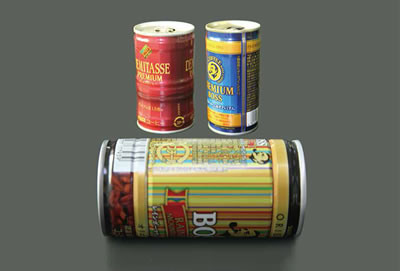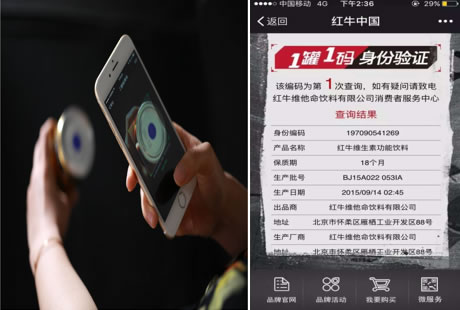
After experiencing rapid development in the past 30 years, the beverage industry in China has been declining, and the mainstream categories have been polarized. Carbonic acid and fruit juice beverages showed a downward trend. Bottled water was the only growth category; herbal tea, plant protein beverages, and functional beverages enjoyed promising market prospects; coffee, soy milk, and vinegar beverages needed to be cultivated. For metal-packed beverages, in recent years, the “three-to-two†wave triggered by the two big herbal teas has been rippling. In addition, the beverage industry has entered a downward adjustment period since 2014, and cans of beverages in three cans have suffered back-to-back entrapment and growth has stagnated. There are even signs of regression. It is necessary for a three-piece beverage can manufacturing company to highlight its advantages in several subdivided beverages such as protein beverages, ready-to-drink coffee, and functional beverages through a series of innovations to consolidate and expand market share.
Although the “two to two†packaging of two herbal teas has brought a huge impact on the overall three-piece beverage cans industry, there are not only a few three-piece canned beverages with a size of more than one billion on the market, but also are mainstream in all segments. Brands, such as: Red Bull, the first brand of functional beverages, and the six leaders of vegetable protein beverages, “Six Walnuts†and “Luluâ€, are still using three pieces of metal packaging. The excellent barrier property, pressure-bearing performance and exquisite pattern printing of the three-piece beverage cans are unmatched by other forms of packaging. Thus, the three-piece cans still occupy an important place in the packaging.
Innovation is the main growth engine for beverage packaging in the coming years. The three metal packaging will present the following four major development trends.
The can body of the lightweight beverage cans was gradually reduced from the conventional 0.20mm to 0.15mm in iron. In the market-circulating packaging, 0.18mm and 0.15mm thick tinplate has been used normally, and the process and equipment level can meet the requirements, for example, Soudronic welding machines and combined machines from Switzerland are able to realize welding and crimping of 0.12mm tinplates. The German KBA printing machine can realize the printing of thinnest 0.12mm tinplates. Although the transition from 0.15mm to 0.12mm can be realized on the equipment, there are not many domestic manufacturers that can produce 0.12mm DR material, and the thickness of this material is close to the limit of the equipment processing capacity, and the skills requirements of employees are higher. Therefore, it is a great challenge to product quality stability and production line efficiency.
Although there are standard tank types for tank-type differential metal tanks, as the customer's selectivity increases, in order to attract the attention of consumers, often make a fuss about can design, the difficulty lies in the equipment and mold investment. Can type changes lead to great investment in equipment reform. If there is not enough order support, many companies will not be willing to invest in this cost.
Suggestions for this transformation: It is possible to jointly develop new tank types with customers and promote the upgrade of industrial packaging. For example, Guangxi Jinzizi and a metal packaging company jointly developed a non-standard new tank type - 202/206/204 tank type.
High food hygiene requirements Since the melamine incident in 2008, the food and beverage industry has begun to pay high attention to this health index. In 2011, the National Health and Family Planning Commission announced on the 10th Announcement on the Limited Value of Melamine in Food: the melamine in infant formulas The limit value is 1 mg/kg, and the limit value of melamine in other foods is 2.5 mg/kg. Foods that are higher than the above limit must not be sold. With this basis, major beverage manufacturers put forward more stringent requirements for packaging, especially in the industry leading brands, taking the lead in formulating their own product standards. Taking melamine as an example: Under the conditions of high temperature sterilization, the melamine migration must not be detected below the detection limit of 0.01 ppm. This poses a great challenge to the coatings industry. Paint manufacturers that can meet this requirement will survive, and those that do not meet the requirements will be eliminated. Of course, future trends will pay more attention to the EU and FDA standards. In terms of metal packaging companies, in addition to meeting the requirements of the chemical coating indicators at the source, the production of private lines, clean production, and the process control of their own processes are proposed. With higher requirements, some powerful companies are now equipped with high performance liquid chromatographs in their factories to control some important health indicators online.
Environmental protection With the increasing national environmental requirements, the “Thirteenth Five-Year Plan†has incorporated VOCs (volatile organic compounds) into the main constraint emission reduction targets, and packaging printing has become the focus of the State Environmental Protection Administration's monitoring industry. Traditional metal printing production It is inevitable to use volatile coatings, rigid national policies, and local VOCs reward and punishment systems have been issued to force the industry to carry out rectification. On the one hand, it is possible to use the purification processing equipment to process gases, and at the source, through the development of more Environmentally friendly coatings, such as high-solids or water-based coatings, are replacing current systems, and the matching of these coatings with downstream beverage processes remains time-tested.
In addition, it is also possible to replace the current coating operation with coated iron. Of course, there have been some studies on the production of coated iron in China, and some non-high temperature sterilization products such as candy boxes, dry powder boxes, and lids, but still There is no product suitable for high temperature sterilization and welding. It is Japan's Toyo canning that can achieve this process abroad, and many Japanese beverage cans are using coated iron in batches. With the acceleration of emission reduction requirements and the excellent safety and health performance of coated iron, it still has a broad market prospect. On July 25, 2016, Baosteel Co., Ltd. successfully rolled off the first coil of coated iron product from the 1420 unit iron-coated unit, marking the completion and production of domestic high-grade coated iron units.
One-to-one Internet of Things "two-dimensional code" has become a core element connecting computers, the Internet, mobile communications and the Internet of Things. But all along, due to the existence of "universal codes" in ordinary two-dimensional codes, they can only serve as windows for data reading, and cannot be used to classify push information or form interactions until the emergence of "unique codes."
The two-dimensional code issued by Red Bull is different from the concept of “Internet+†constructed by other brands through “unique codeâ€. Red Bull's two-dimensional code is coded on the production line with a laser engraving method at the bottom of the tank, which is the only way to realize production and coding. The synchronized two-dimensional code “One can and one yardâ€, and officially listed canned drinks, and has anti-counterfeiting traceability, marketing management, promotion optimization, micro-services and other functions.

Red Bull's "one can and one yard" is coded on the bottom of the tank by laser engraving on the production line.
Concluding remarks Three beverage cans are an important part of metal packaging. In the past, they played an important role in product protection, extending shelf life, and increasing product added value. Nowadays, with the intensified market competition, consumer choices are increasingly diversified, forcing the metal packaging industry to continue exploring in the direction of innovation. I believe that with the efforts of packaging people, metal packaging can still shine.
The category of solenoid valves specially designed for controlling high temperature gas and liquid, such as steam, hot water, oil, etc.
Product Specifications:
1. Port Size: 1/8'' to 6''
2. Orifice Size: 1mm to 150mm
3. Pipe Connection: Female Threaded, Male Threaded, Flanged
4. Function: 2 Way Normally Closed, 2 Way Normally Open
5. Operation: Direct Acting, Piston Pilot Operated
6. Body Material: Brass, Stainless Steel
7. Seal Material: FKM, PTFE, PEEK
8. Working Temperature: FKM: -10 to +150℃, PTFE: -60 to +200℃, PEEK: -150 to +350℃
9. Voltage: 12VDC, 24VDC, 24VAC, 110VAC, 220VAC 50/60Hz
Solenoid Valve For Steam, Steam And Hot Water Solenoid Valve, Brass Steam Solenoid Valve, Stainless Steel Steam Solenoid Valve
NINGBO BRANDO HARDWARE CO.,LTD , https://www.brandopneumatic.com